Maintenance
Its easier to take preventative measures once floor has been installed than it is to try to repair damages at a later stage to same floor.
Important points for maintaining timber floors:
- Use felt pads or furniture cups under furniture legs, to reduce scratching.
- Ensure barrier mats are large enough to be effective and are cleaned regularly.
- Protective matting beneath chair wheels will help to reduce wearing of the surface.
- Minimum water only must be used. Remove any spills immediately.
Lacquered Floor Maintenance Guide:
Daily/Weekly Maintenance
Vacuum and sweep the floor regularly to remove dirt and grit. Occasionally, dirt may stick to the surface. This can be removed with a well rung-out cloth and mild soapy water or with the use of speciality cleaning products.
Periodic Maintenance
If a polish product has been used or the floor becomes harder to clean, it may eventually become necessary to use the appropriate stripping product to remove any residues and to leave a clean lacquered surface. The regular treatment with polish can usually then be resumed. Polish stripping often involves the use of relatively large quantities of water. It is important that this is removed quickly in order to avoid damage to the floor. Remember – always follow the manufacturer’s instructions.
Longer Term Maintenance
Eventually, the floor may begin to show signs of wear. This may first become evident in areas of concentrated foot traffic such as doorways, walkways or stairs. It may be necessary to sand any areas which have become grey or black (see Spot Repairs). Ensure any traces of polish, cleaning products, dirt, grease and dust are removed. Re-sealing the floor must be done with the lacquer recommended by the floor manufacturer. If in doubt, clean and seal a small test area first.
Spot Repairs
The area must be sanded to expose clean wood. Sand to a fine finish, 120 grit or finer. It may be necessary to use coarser grades first to remove dirt, scratches etc. Remove dust with a vacuum, and then wipe with a damp cloth to remove remaining traces.
The choice of lacquer is important, as different ‘clear’ lacquers may result in different colours being highlighted in the wood.
For best results, use the same lacquer as that already applied on the boards.
Apply the first coat of seal to the “patch”. Allow to harden then sand with fine sandpaper to remove the raise grain. Remove dust as before.
Further coats can then be applied at appropriate intervals. Often one coat is then applied to the whole floor to provide a uniform finish.
Summary
Wood floors, properly finished, are the easiest of all floor surfaces to keep clean and new looking. Unlike carpeted resilient floors that show age regardless of care, wood floors can be kept looking like new, year after year, with minimum care.
What is Minimum Care?
A good rule of thumb is to vacuum or dust mop weekly. A damp mop can be used for spills and general clean up on floors, which have a non-waxed polyurethane finish. If the floor is waxed, occasional buffing helps remove scuffmarks that appear in the wax coating.
Wood & Water Don’t Mix
No matter what finish your wood floor has, never intentionally pour water directly onto the floor. Excessive amounts of water may find a way to seep between the boards causing them to warp or stain.
What Type of Finish Does the Floor Have?
As a general rule you can be sure a plank or strip floor was prefinished at the factory if it has V-shaped grooves along the edges where the boards join and sometimes where the ends butt. Unfinished plank flooring may also have grooved edges but usually this is a mark of a prefinished floor. One of the principal types of finishes used on wood floors is a surface finish – Polyurethane, Varnish.
Polyurethane
This blend of synthetic resins, plasticizers and other film-forming ingredients produces an extremely durable surface that is moisture-resistant. It is the best choice for a kitchen or wherever there is exposure to water splashing and spills.
Polyurethane is available in high gloss, semi-gloss and matt finishes. Most manufactures of polyurethane recommend no waxing. However if you prefer the appearance of a waxed floor you may apply wax over these finishes with fine results.
Varnish
Depending on the type of varnish used, the finish will be high, medium or low gloss. Varnish tends to darken with age and is difficult to touch up. It dries slowly. If the quality is good, varnish will provide a highly durable surface, if not, it tends to become brittle, to powder and to show white scars.
Removing Stains
Almost all manufacturers recommend using their specially formulated cleaning and maintenance products in order to preserve the wood lustre. This is because other products may discolour or damage the finish on the flooring and invalidate the guarantee.
Natural Oiled Floor Maintenance Guide
An oiled floor needs to be looked after properly & protected, with suitable and regular treatment it is possible to extend the life of a natural oiled finish.
Keep the floor dust and sand free using a vacuum cleaner, a soft brush. Use a good quality door mat. Dirt is the main reason for the ear and tear of wooden floors, and by putting a mat outside you will prevent dirt scratching the finish.
Fit all your furniture with felt pads to prevent unnecessary scratching. Do not slide heavy furniture to move it, lift it instead.
in the event of water of liquid spills, clean up immediately. Coffee, red wine and red sauce must be wiped off immediately, as they will stain. For stubborn stains, it is recommended to use Intensive cleaner directly on the area undiluted, if this does not remove stain then it may be necessary to do a spot repair. Please contact your retailer for advice if this is the case.
It is only necessary to thoroughly clean the floor by hand when it is very dirty. Never use too much water, since this may cause the wood to expand / swell and get damaged.
Maintenance
To protect your Natural oiled finish against dirt, you should regularly treat it with a cleaner suitable for Natural oiled finish (Kronos Soft Balm Cleaner). At the beginning use the soap every week or fortnight. Treat the floor in accordance to your own judgement or requirements, but never less than once a month. After each soap treatment the finish will become less prone to dirt sticking to it and staining.
Periodic Maintenance
If your floor is beginning to take on a bare / dry appearance, you can perk it up by applying a natural oil (Lios Natural Oil / Osmo Hardwax oil). Before applying the oil, ensure that the floor is completely clean and dust free. To remove any remnants of soap solution, you should clean the floor with an Intensive cleaner (Kronos intensive Cleaner). Then oil the floor. Do not prolong the treatment until the oil layer has been walked off or worn off.
Oiling Method
Always follow the application guidelines of the Natural oil that you are about to use, as instructions vary with different product ref application methods & drying times – refer to manufacturers guidelines.














